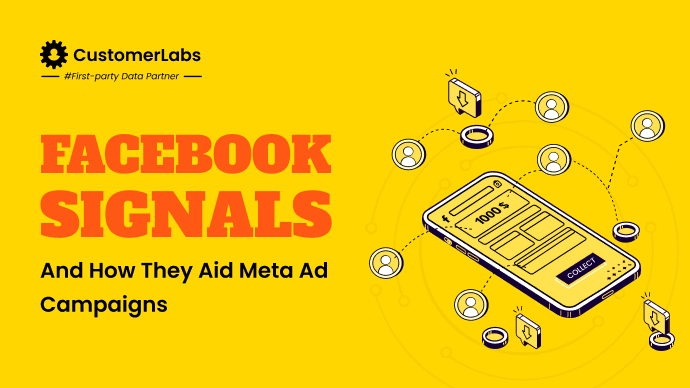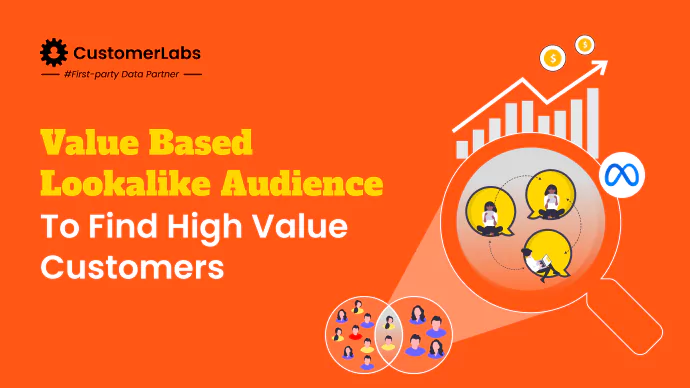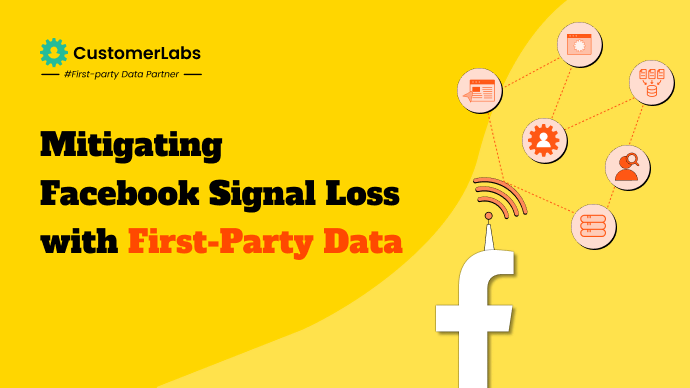Imagine telling a marketer in 2018: “One day you’ll mostly just pick a goal and Meta’s AI will manage everything else: bidding, audience, placements, almost hands-off.” They’d probably laugh.
Where Meta is pushing exactly that vision via Advantage+ Shopping Campaigns (ASC).
In fact, Meta recently hinted that advertisers using ASC often see lower cost per acquisition and better scaling consistency (Meta frames it as better efficiency through automation).
But here’s the plot twist: ASC is both beloved and troubled. Some marketers swear by it, and others avoid it like the plague.
In this blog, we’ll cut through official stats, practitioner critiques, case studies, and battle-tested strategies.
Want to see how ASC + first-party data can unlock real growth (beyond just low ROAS)? Book a Demo to own your data and unlock the skyrocketing growth.
Before we dive into tactics and performance numbers, let’s first unpack exactly what Advantage+ Shopping Campaigns are and how they work.
What is Meta Advantage+ Shopping Campaign (ASC)?
Advantage+ Shopping Campaigns (ASC) are part of Meta’s automation tools designed to boost performance. Instead of you manually managing every detail, Meta’s AI takes over it, automatically adjusting campaigns in real time and showing ads to people most likely to buy.
Behind the scenes, the ASC API enables advertisers to connect customer data and product catalogs directly to Meta, providing the system with stronger signals to optimize with.
The better data you provide to Meta, the smarter its algorithms become, but it also means handing over more control to Meta.
Understanding ASC is one thing, knowing what makes it ‘Advantage+’ is where things start to get interesting
Key Features (What Makes It “Advantage+”)
Here’s what ASC brings to your ad stack:
- Automation-over-manual setup: fewer levers to dial (less micromanagement).
- Machine learning–driven targeting: The system automatically finds people most likely to buy, even beyond the audience you initially choose.
- Dynamic budget & placement optimization: Meta shifts budget and placements in real time to maximize conversions.
- Creative mixing & matching: Give the AI a set of images, videos, and copy, and it tests different combinations to find what works best.
- Single consolidated campaign: You can run both prospecting and retargeting in a single ASC campaign instead of setting up separate ones.
Why does this matter? For e-commerce brands looking to grow, ASC can save time and make campaigns more efficient, especially for small teams without dedicated ad specialists.

ASC vs Manual Campaigns vs Advantage+ App Campaigns – When to Use What
Here’s where we get tactical. You don’t need to choose only one forever; many high-performing stacks are hybrid.
When ASC shines:
- You want to quickly test numerous ad creatives to determine which one works best.
- You want to scale your campaigns widely without having to build complex setups.
- You already have a steady number of conversions so that the AI can learn effectively.
- Your team doesn’t have time to manage every detail of the campaigns.
When Manual campaigns (classic catalog/custom targeting) excel:
- You need granular control (e.g., niche segments, exclusions, audience layering).
- You’re doing incrementality experiments or brand lifts.
- You want more transparent reporting and breakdowns (e.g., which sub-segment did best).
- You want to defend specific scalable sub-audiences, rather than ceding all control to AI.
Knowing the differences is one thing; making them work in your campaigns is another. Here’s how to get the best results.
What about Advantage App Campaigns?
Meta’s Advantage App Campaigns work similarly for apps as ASC does for shopping. You provide the creative and basic signals, and the algorithm handles placements, events, and bids. Use Advantage+ App Campaigns when your goal is app installs or in-app actions, not direct product sales.
Comparison Table (ASC vs Manual vs App)
| Feature / Goal | ASC | Manual (Catalog) | Adv+ App |
| Automation / Hands-off | High | Low | High |
| Control over targeting | Low | High | Low |
| Creative experimentation | AI-driven | Manual A/B | AI-driven |
| Transparency/interpretability | Medium | High | Medium |
| Best for | Scaling shopping/e-commerce | Niche targeting, incrementality | App-based conversion growth |
Best Practice: Use a hybrid approach, let ASC scale broadly, but keep manual or app campaigns for retargeting, testing, and niche audiences. This way, you scale while staying in control.
Knowing the differences is one thing; making them work in your campaigns is another. Here’s how to get the best results.
Features are great, but what do they actually mean for your campaigns? Let’s break down the real-world benefits.

Why Is ASC the Smart Choice?
Let’s be honest, Meta wouldn’t push ASC if it didn’t benefit them. But some of those benefits do translate to advertisers, too. Below are the key arguments (with backing):
1. Automation & Ease-of-Use
You don’t need to stress about creating tons of audience segments, adjusting bids manually, or running multiple campaigns at once. Advantage+ Shopping Campaigns (ASC) take care of all the complicated stuff in the background, so your ads just work without all the extra hassle.
2. AI-driven Optimization (Bidding, Placement, Audiences)
Meta’s AI doesn’t just follow your setup it optimizes on its own. It can move your budget to the ads that are performing best, show them in the placements that get the most clicks, and even find new audiences that are likely to convert. The result? More sales with less manual effort.
3. Better Performance Metrics:
Compared to the manual campaigns, Advantage Plus shopping campaigns are optimized and show:

- 17% more improvements in cost per action
- Return on ad spend improved by 32%
- Results in 9% improvement when using ASC
- Lower cost up to 10% per qualified lead using ASC.
- 7% improvement in using the Advantage+ app campaigns.

The 6 Major Drawbacks of ASC (Based on Marketer Feedback)
Alright, pause the hype. There’s real pushback from people managing ad dollars daily. Let’s dive into the six biggest complaints, along with contrasts to Meta’s rosy claims and real voices from the trenches.
(Note: quotes are lightly edited for readability, but reflect original sentiment.)
Numbers and lists tell part of the story, but the real insight comes from marketers sharing their day-to-day experiences
What are the Real Pros, Advertisers Are Saying
Let’s move beyond polished case studies and hear straight from the trenches practitioners who’ve spent real dollars testing ASC.
| Theme | Reddit Voices, Unfiltered | Key Takeaways / Trade-Offs |
| Signal & Targeting Bias | “Advantage+ works in a specific way; it prioritises ads to those who have a higher signal intent, like ATC or people who engaged multiple times.”“Adv+ audience works based on your creatives. If your creative focuses clearly on a pain point, it’ll find those who feel that pain.” | The algorithm heavily favors users who already “signal” purchase intent. If your creative isn’t tightly aligned with that intent, performance can drop. Loose messaging = weak signals. |
| Scaling & Exclusion Pain | “Adv+ performs really well with broad, worldwide targeting. But when I narrowed it down to specific interests, it tanked. “It worked great for me one month… then went complete garbage.” | Marketers feel boxed in by ASC’s “black box.” Limited exclusions make it tough to maintain data hygiene or block spam events. As budgets scale, wasted spend becomes more visible and painful. |
| Broad vs. Narrow Targeting | “Meta ads can be challenging, but Advantage+ is worth trying. Create different formats and give them as much help as you can. “Advantage+ has been useless every time I try it.” | Advantage+ thrives when it’s given freedom to hunt for conversions broadly. But narrow targeting or interest filters often choke results. Flexibility is its lifeblood. |
| When (or Whether) to Use It | “The success factor most people miss… Its creative quality and testing volume. Even the best ASC will fail with mediocre creative. “Advantage+ audience can be left blank, and Meta’s AI will find people, but what if it doesn’t understand your product?” | Marketers are split. Some swear by it for scaling once the pixel is mature; others say it’s unpredictable and costly for smaller budgets. Treat it as a test, not a default. |
| Creative Burden Increases | “The success factor most people miss… Its creative quality and testing volume. Even the best ASC will fail with mediocre creative.”“Advantage+ audience can be left blank, and Meta’s AI will find people, but what if it doesn’t understand your product?” | Since ASC automates targeting, creative becomes your only real lever. Weak creatives = wasted dollars. You need multiple high-signal assets to teach the algorithm effectively. |
So far, we have read what others say. What is the practicality? But after this, we gonna experience the real world testimonials given by big brands.

Case Studies & Official Stats by Meta
Let’s ground this theory in proof. I pulled both Meta-published case studies and CustomerLabs references to compare performance.
Meta’s Advantage+ Shopping Campaigns (ASC) have demonstrated significant performance improvements across various industries, leveraging AI and automation to optimize ad delivery and targeting. Here are some compelling case studies
Loro Piana – Doubling Purchases with AI-Powered Automation
Loro Piana, the Italian luxury fashion brand, implemented Meta Advantage+ Shopping Campaigns to optimize their product catalog across Facebook and Instagram. Before ASC, they relied on traditional catalog campaigns that required manual targeting and audience segmentation.
By integrating ASC, Loro Piana allowed Meta’s AI to automatically identify high-intent audiences, test multiple creative combinations, and dynamically allocate budgets.
Results & Insights:
- 2× increase in purchases compared to previous catalog campaigns.
- Automation reduced the need for constant manual oversight, freeing the team to focus on high-value creative and strategy work.

Meta has done this by powering their ASC using first-party data. Let’s look into 1PD Ops, which owns its place by providing first-party data, and they implemented it for their client brand.
This brand had a 117% Increase in Revenue through ASC campaigns – Feeding 1P Data
MNMLST is a Luxury watches E-Commerce industry that struggles with optimizing the Meta Advantage+ Shopping Campaigns to drive higher Average Order Value(AOV) and attract a broader customer base. After they onboarded, MNMLST leveraged advanced first-party data and automated solutions to boost ad performance, increase conversions, and maximize revenue while improving targeting precision.
The Challenge
MNMLST, a high-end luxury watch brand, faced challenges in optimizing their Meta ad campaigns due to limited event matching and poor signal quality when relying solely on Shopify’s default Conversions API (CAPI). This setup hindered the Meta algorithm’s ability to accurately target high-intent customers, leading to stagnated Return on Ad Spend (ROAS) and inefficient ad spend allocation.
The Solution: First-party data
To overcome these limitations, MNMLST integrated CustomerLabs’ Advanced CAPI solution, which enabled:
- Custom Conversion Events: Segmentation of events based on Average Order Value (AOV) tiers, gender-specific campaigns, and product categories.
- Enhanced Event Match Quality (EMQ): Improved signal strength by capturing a broader range of user interactions and attributes.
- Algorithm Training: Aligning campaigns with specific business objectives to train Meta’s algorithm for better optimization.
Results & Insights
- 117% Increase in Revenue: After implementing the advanced CAPI setup, MNMLST reported a 117% increase in revenue compared to their previous campaigns.
- Improved Event Match Quality: The new setup led to better retargeting for high-intent shoppers and more relevant post-purchase journeys, driving upsells and repeat purchases.
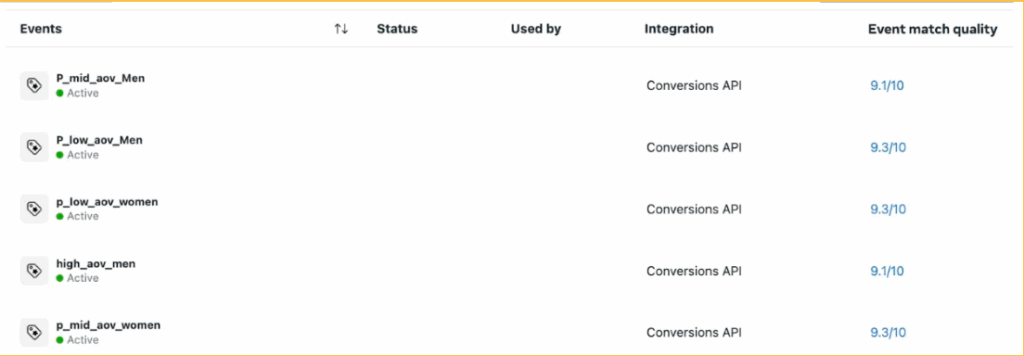
- Enhanced Ad Performance: Meta reported measurable improvements, including a 6% increase in recall and an 8% improvement in ad quality on selected segments.
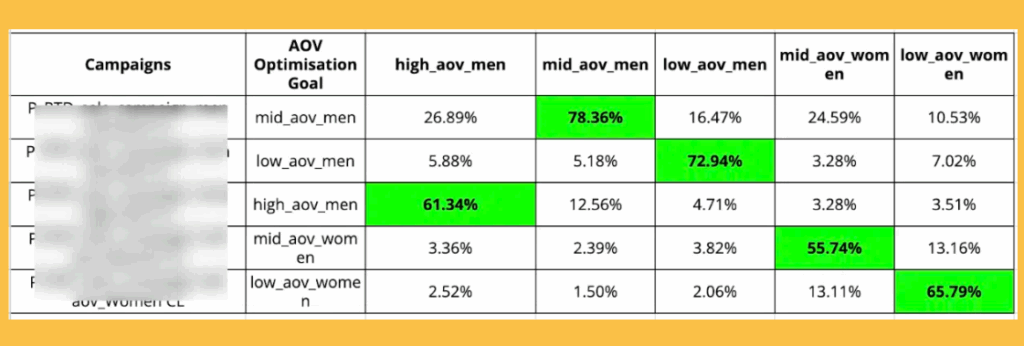
This case study exemplifies how leveraging advanced first-party data strategies can significantly enhance ad performance and drive substantial revenue growth.
You got the answer? – How are these companies successful in ASC?
It’s time to know what the best practices are that help ASC to run successfully with 1PD.
How to Maximize Performance with ASC Best Practices
You can’t just flip the switch and expect miracles. Here’s a mix of Meta’s guidelines + community hacks to tilt the odds in your favor:
- Don’t overcomplicate targeting
Limit audience settings to gender, location, and budget; only other inputs will become ‘suggestions’, not constraints under Adv+. - Monitor CPM, Frequency, CPA over ROAS (at least initially)
Because ASC often pushes high volume, ROAS can be misleading. Watch how frequency climbs, how CPM trends, and whether CPA is stable. - Limit creative pool breadth
Don’t dump 50 creatives at once. Start with 10–20 solid ones. Fatigue will happen fast, and many unique creatives mean the AI has too many weak performers. - Refresh creatives frequently
Rotate in new visuals, copy, and angles. The AI loves fresh signals. Use UGC, seasonal creatives, and dynamic formats. - Test caps (spend, frequency) cautiously
Automatic caps or constraints can disrupt algorithmic learning, so only apply them after campaigns are stable. - Feed high-quality first-party signals
Pixel, Conversions API, event deduplication, offline conversions, the better your data, the smarter ASC’s decisions. - Incrementality isn’t optional; run holdout tests or geo tests to understand whether ASC is driving new conversions or just repackaging what you’d already get. Don’t blindly trust Meta’s internal attribution.
- Budget scaling: Step up slowly
Instead of doubling your budget overnight, increase it in increments (10–20 %) to avoid disrupting the learning curve. - Segment reporting carefully
Use “audience type breakdowns” (e.g., new vs existing customers) where possible to see which cohorts are driving performance. - Don’t turn off manual entirely
Use manual (or traditional catalog) campaigns in parallel to protect incrementality or test new messaging.
As you refine your strategy, it’s also worth keeping an eye on what’s coming next. Here are the big trends shaping ASC.
What are the Emerging Trends in ASC?
As digital advertising keeps changing, Advanced Shopping Campaigns (ASC) are getting smarter too. Google, Meta, and other platforms are pushing harder on automation. Two big trends are reshaping how marketers plan, run, and measure campaigns: incrementality measurement and AI-driven creative recommendations.
These aren’t just buzzwords; they’re changing the future of performance marketing.
The Growing Importance of Incrementality Measurement
Here’s the real question:
Are your ads actually bringing in new customers, or are they just taking credit for sales that would have happened anyway?
Unlike basic metrics like conversions or ROAS, incrementality gets to the heart of the matter:
“What would have happened if I hadn’t run this campaign?”
It’s a reality check for your marketing making sure your ads are truly adding value, not just riding the coattails of inevitable sales. Before moving forward, let me explain you what is Incrementality measurement?
Incrementality measurement is the process of determining whether your marketing or advertising efforts are actually generating new actions or sales that wouldn’t have happened otherwise, rather than just capturing conversions that would have occurred naturally.
Now that we understand what incrementality measurement means, let’s look at how to actually measure it.
Split your audience into two groups:
- Test group: People who will see your ads.
- Control group: People who won’t see your ads.
- Run your campaign as usual for the test group. Keep the control group excluded.
- Compare results after a set time (e.g., a few weeks):
- How many conversions or sales happened in the test group?
- How many happened in the control group (without ads)?
- How many conversions or sales happened in the test group?
- Calculate incrementality:
Incrementality=(Test conversions−Control conversions)/Control conversions\text{Incrementality} = (\text{Test conversions} – \text{Control conversions}) / \text{Control conversions}Incrementality=(Test conversions−Control conversions)/Control conversions
This tells you how many extra sales or actions were caused by your ads — not just captured by them.
The questions that really matter now are:
- “Is this campaign actually bringing in new customers?”
- “Am I scaling profitably, or just spending more?”
- “Which channels and audiences are actually driving growth?”
Shifting your focus to real, measurable impact doesn’t just improve ROI, it helps you make smarter decisions, spend more efficiently, and build long-term growth.
Measuring impact is only half the story. The other half? AI. It’s transforming how ads are created, tested, and optimized, making campaigns smarter, faster, and more efficient so your marketing isn’t just working, it’s working for real.
More AI-Driven Creative Recommendations
Last year, the big shift in Meta ads was automating bidding and audience targeting.
This year, AI is moving into the creative side of marketing.
Advantage+ Shopping Campaigns (ASC) now use AI not just to find the right audience but also to shape what your ads look like and how they speak to customers.
AI tools inside Meta can now suggest:
- Better headlines that grab attention
- Visuals that match what’s performing well
- Stronger call-to-actions (CTAs)
- Product pairings that convert more
These suggestions aren’t guesswork. They’re driven by live performance data — things like:
- What products are selling the most
- Seasonal trends and search behavior
- Which themes are working for similar brands
Here’s how that plays out in real campaigns:
- Dynamic product feeds: AI automatically builds ad variations around your top sellers.
- Creative fatigue alerts: You get notified when an ad’s visuals or copy start losing performance.
- Smart creative ideas: Meta might recommend trending angles like “holiday gifts” or “eco-friendly picks” based on what’s converting across the platform.
AI doesn’t replace your creative team it enhances their work.
You still set the message, tone, and brand voice. AI just helps you decide which creative direction performs best and when to switch things up.
Lets wrap this up with a conclusion.
Conclusion
At the end of the day, ASC is powerful but only when treated thoughtfully. It can be a scaling engine or a money pit if misused. The difference lies in your data, your creative discipline, your measurement rigor, and your willingness to pair automation with control.
Consider ASC as one tool in your toolkit, not the entire strategy. Use it wisely, do your experiments, and keep a manual fallback.
If you’re curious how ASC pairs with first-party data or how to operationalize 1PD-driven growth with Meta, Book a demo with CustomerLabs. Let’s unlock long-term value, not just short-term wins. Get into the days where you own the Meta Ads – Sign up 14-day free trial only to you.
